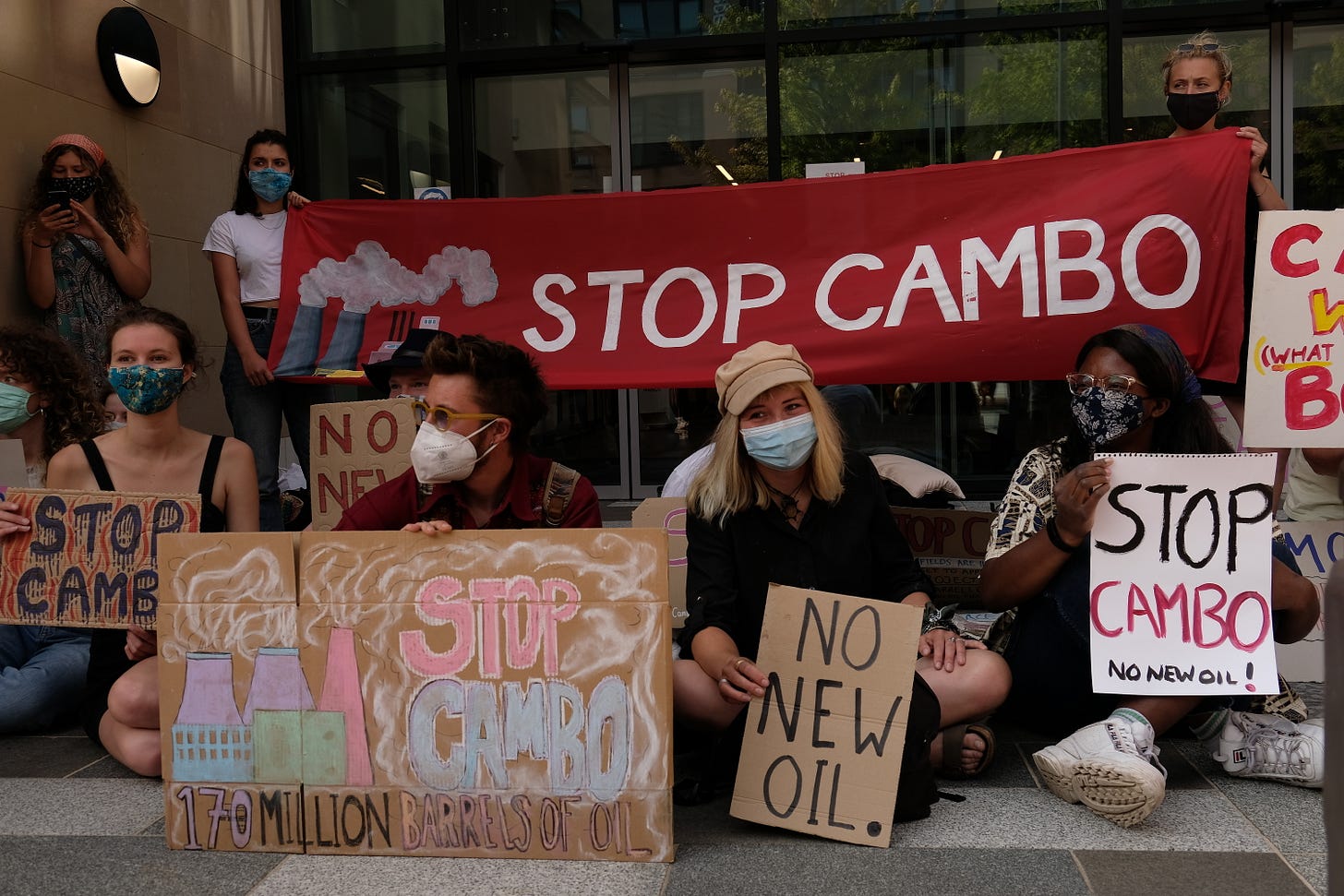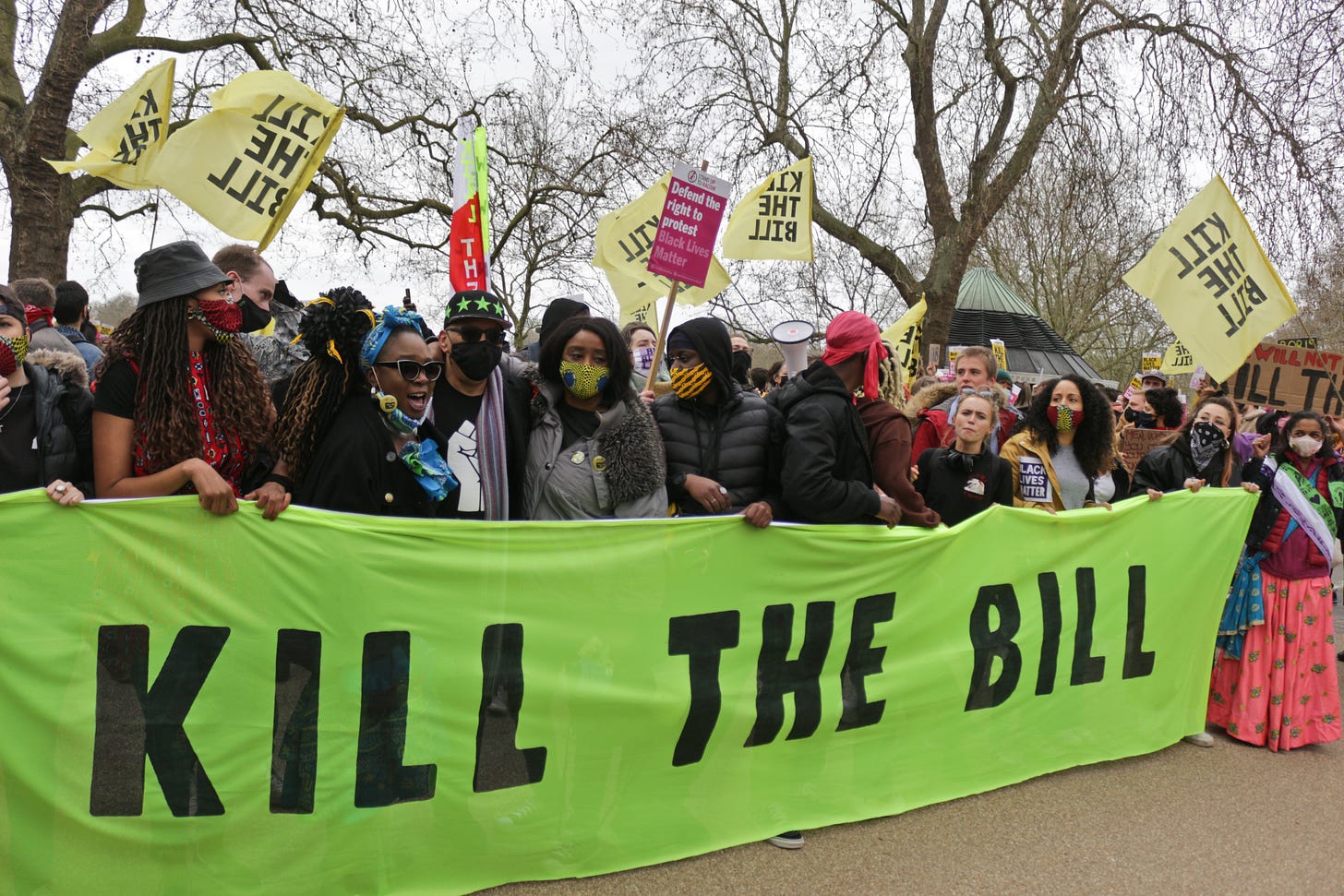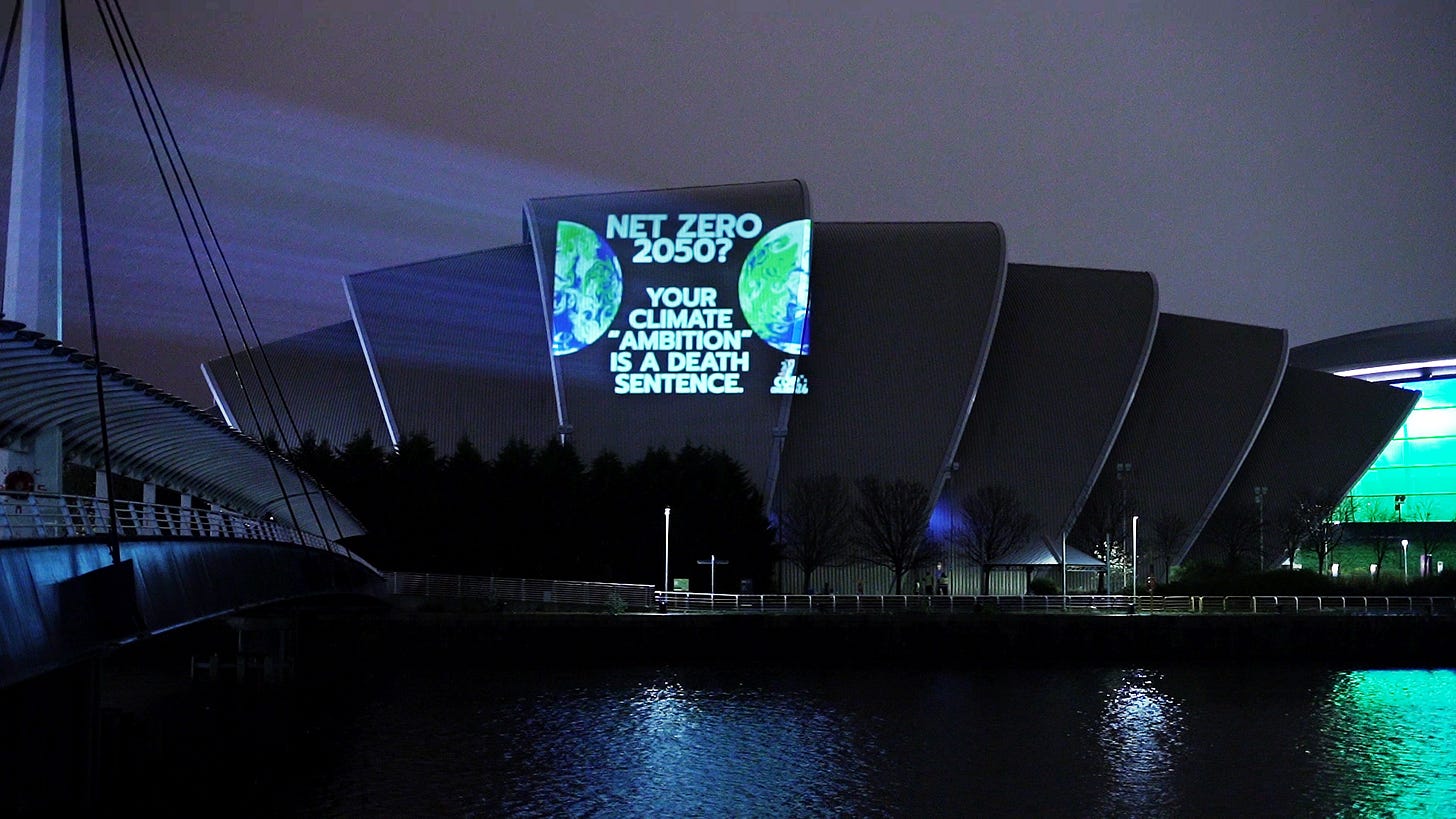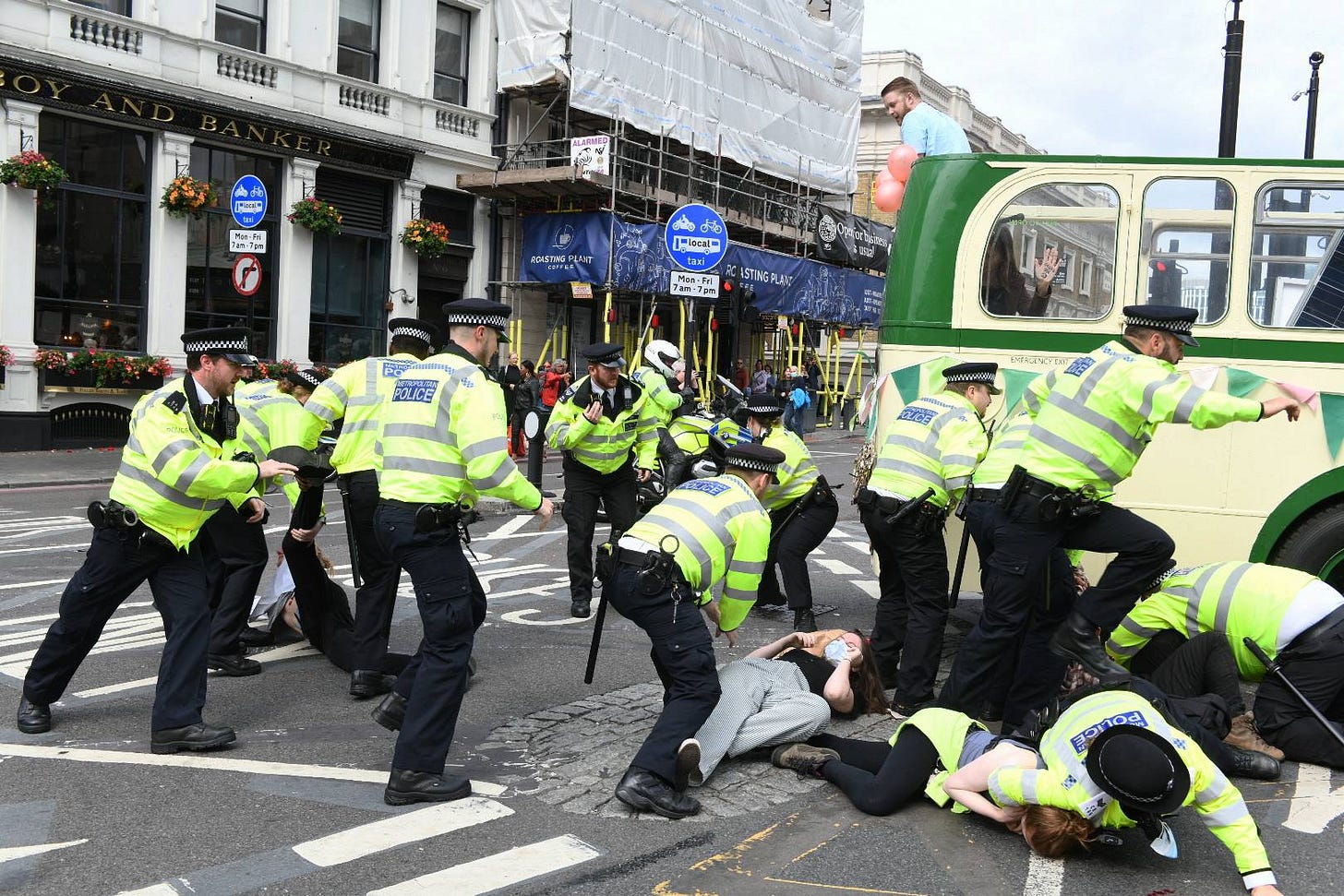Across the UK, environmental direct action begins again in earnest
A nation shaken by COVID-19 and a new bill clamping down on freedom of speech and association, asks: what does environmental activism look like now?
If the ruby-red water of the Buckingham Palace Fountain is anything to go by, no-holds-barred environmental protest is back. Extinction Rebellion is now midway through its first major civil disobedience campaign since last September. And it’s a big one, specifically targeting those institutions at ‘the root of the climate and ecological crisis’.
The Queen, according to those who dyed the fountains, has blood on her hands, due to her involvement in hunting and animal agriculture. So too do many of the banks and corporations in the City, and the cultural bodies – from museums to media – that have neglected to communicate the scale and urgency of climate change.
From die-ins, occupations and drenching buildings in red paint, to marches, crisis talks, carnivals, and digital activism, the ‘Impossible Rebellion’ is as all-encompassing as it is showstopping. But will it be effective?
After months of COVID-induced confinement, and ahead of the clamping down on freedom of speech and association promised by the PCSC Bill, direct action is evolving. With a mere handful of years left to make a difference, protest is more necessary than ever – but all odds feel against it.
Carving out a new space
For individuals – who have attended environmental demos, but who aren’t entrenched in the fabric of the groups behind them – it will not be a case of transplanting back into things as they were.
We lost the weekly cadence of Fridays for Future, and have gone without visual reminders on our streets of the ongoing campaign for climate justice. Priorities and material circumstances; how we vocalise our opinions, find out about events, and communicate with each other – these have all changed. Digital activism has morphed into something much more sophisticated. Some of us are simply paralysed by the weight of how much time we have lost.
“I’ve felt very overwhelmed by COVID and the proposed PCSC Bill”, says 22-year-old activist Georgia Earing. “But I’m also hopeful, from the protest in Edinburgh for Stop Cambo.”
On July 19th, or ‘Freedom Day’, activists hosted a sit-in at Queen Elizabeth House, a UK government building, against the proposed North Atlantic oilfield development. Following additional protests (by kayak), construction has been delayed until 2021.

“At the moment, I am signing petitions, sharing as much as I can with friends and family, and watching this space to see what I can get involved with,” Earing continues.
“Although it is so difficult with the PCSC Bill, citizens have a right to protest – and shouldn’t have to worry about being arrested for trespassing.”
Regrouping ahead of COP
There will no doubt be a process of acclimatisation – exacerbated by these threats to health and security – for the UK’s climate-concerned. But behind the scenes, cogs are turning to ensure 2021’s activism gets results from governments without, as has been a problem in the past, alienating ordinary citizens. All eyes are on COP26, the path-defining conference scheduled for this November. Activists from all around the globe are set to unite in Glasgow, putting pressure on governments to be radical with their negotiations and projections.
“What a privileged position it is if you’re in a pandemic and still organising”, says Jana Ahlers, a climate justice activist pursuing a master’s in Education Policies for Global Development. “What kind of financial and social safety structure do you have to have, to still be confronting the climate crisis in your work daily?”
Ahlers, alongside trade unionist Stuart Graham, is a member the COP26 Coalition – a group of individuals, NGOs, trade unions, campaign groups and other organisations that have “taken on the responsibility of planning civil society movements” to accompany the conference.
Together they will stage the counter-COP – a Global Day of Action for Climate Justice on November 6th, and a People’s Summit for Climate Justice on November 7th-10th. Ours to Save spoke to Ahlers and Graham, on behalf of the Coalition, about how the postponement of COP changed the shape of these events.
Confronting issues
“There’s a theory that says we’re at phase five of the climate movement, which means we have radicalised a big chunk [of people] but we’re kind of slowing down”, says Ahlers. “The pandemic hit at that moment. Many people think that we have been slowing down too much, and that we’re not making rapid changes.”
While grassroots environmental action continued throughout the pandemic, its image has suffered on a macro level. In the months prior, Extinction Rebellion suffered a fall from grace when several members climbed on a tube carriage at early-morning rush hour in Canning Town. This exemplified endemic issues with the movement – tied to its (lack of) diversity, and a decentralised strategy, whereby local branches can make choices which don’t represent the group as a whole.
Environmental groups have also recently faced criticism over vague aims and woolly ideology, and a focus on mobilising people at the expense of organising them.
The issues the COP26 Coalition had to confront were different; but it has doubled down on unity across its constituent groups. “Sometimes within activist groups, there’s a tendency to just be focused on your one issue”, says Graham. This means the coalition is united in a core aim: a green transformation, with social justice at its core.
Graham continues:
“We’re proposing campaign policies that cut across the jobs and community divide – because what COVID has really made apparent is the precarity of some people’s jobs, and also how crucial some of the lowest paid jobs in society are.”
“For example, the public transport campaign we run in Glasgow is calling for remunicipalisation and public ownership of the buses – which has massive jobs creation potential. But it also recognises the need to transform society, because there’s no point just replacing all of our cars with electric cars. How are we going to create 20 minute communities if the same amount of cars and congestion still exists on the streets?”
In much the same vein as Gaya Sriskanthan, co-chair of Momentum, who told Euronews Green that 2021 should be the year in which we “hold the line on what a real Green New Deal is,” Graham thinks activism in Autumn 2021 and beyond will have to bring everyone along with it. “We want to be able to propose policies that make sense to people, that are easy to understand, and that will actually benefit folk and will take us towards that just transformation.”
“We now need to argue for a just transformation for everybody. That’s a political choice, in the same way that the response to the COVID pandemic was a political choice.”
Back on the streets
Both Graham and Ahlers have, however, felt the absence of in-person activism deeply. They are ready to get back on the streets. “You get casual momentum”, says Ahlers. “That reciprocity and resonance was lacking.” In terms of digital solidarity, "spending a weekend in the same space as people, and hearing their stories, is very different to listening on Zoom.”
“The coalition has definitely strengthened, but I’m really pushing the idea that COP needs to happen in person, and it needs to happen now. We need to have people from the Global South coming to Glasgow – because these are the people we need to talk to.”
But, as well as new reflections on what it all means, they will be bringing logistical learnings from COVID with them. Although the Coalition has always relied on digital collaboration – via bi-monthly international assemblies, for example – it has levelled up this past year.
Organisations of all shapes and sizes have thrown everything into reaching and convincing people within their online worlds. “Our offline outreach and recruitment methods – from ‘write to your MP’ workshops to festival stalls – have not been possible”, Mike Spencer, from clean energy pressure group Power for People, tells me. “We therefore invest more of our time and budget into online advertising and other digital activities.”
In the COP26 Coalition’s case, the success of a similar pivot will be tested when the People’s Summit rolls around. It looks set to be a tour de force, with 100 sessions in person and 100 online.
“Whenever you talk about mobilisation, people always assume you mean physical presence and demonstration – but we’ve had a rude awakening for the length we still have to go”, says Graham.
“To shift the public narrative around what just transformation actually means – that requires concept mobilisation, online mobilisation, policy mobilisation, campaigning, conversations on social media… We’ve had a crash course in that over the last 18 months.”
Likewise, rather than hosting one large event and a corresponding digital campaign, the Coalition will host splinter protests across the UK and world. All of this is in service of greater inclusivity and, in turn, greater and more meaningful impact.
Killing the Bill
COVID isn’t the only reason people might choose to participate online or in their local area.

The Conservatives are currently pushing through the PCSC Bill which, in the words of Moya Lothian McLean, is designed to ‘restrict protest and encourage violent police responses to demonstrations’.
There are already signs of what it will mean from the enormous police presence at London’s Impossible Rebellion. So far, around 400 arrests have been made.
Although it’s unlikely the SNP will give assent to the PCSC Bill, there are mounting fears about police presence on Glasgow’s streets. Back in 2005, at the Gleneagles G8 Summit, £72M was spent on policing resistance. Graham claims that, this year, a 20,000-strong police force is gearing up to arrest a maximum of 300 people-a-day.
“I don’t think that will prevent people from demonstrating in Glasgow for a second”, says Graham. “It might affect who is willing to put themselves right on the front line – to get arrested – but that’s always been the case.” As for the Coalition’s groups down south, the impact will be more sizeable. But, says Graham, “As a society, I think it’s something we have to actively resist. It’s that concept of taking action against bad laws.”
And indeed, the #KillTheBill movement has made serious waves, even amongst those who don’t see themselves as ‘activists’. The Bill is seen by many as an affront to freedom of speech and association; it has picked up detractors in unexpected places.
"The Bill is a push for urgency, and for getting those who are protesting to Kill the Bill involved”, says Ahlers.
“It’s bringing in a new crowd and pushing people to rethink the government – asking what democracy means, and how we organise.”
She believes one thing is for sure – regardless of the frightening potential consequences of this legislation. “It shows how scary we have been. Obviously it’s not only a response to environmental groups, but it’s probably a combination of BLM and Extinction Rebellion primarily.”
“That’s a small win. This is clearly a response to new forms of direct action.”
Florence Wildblood is the editor of Ours to Save.







